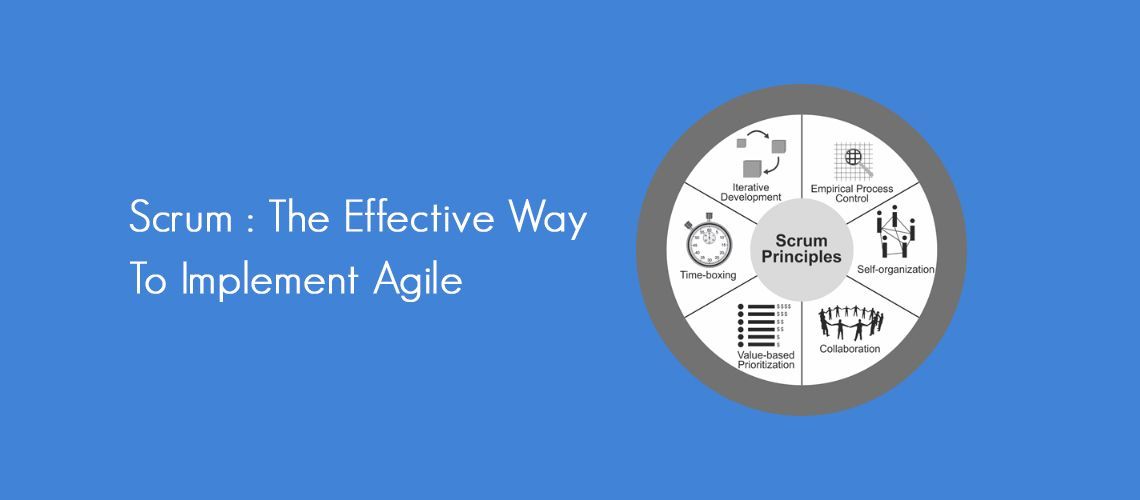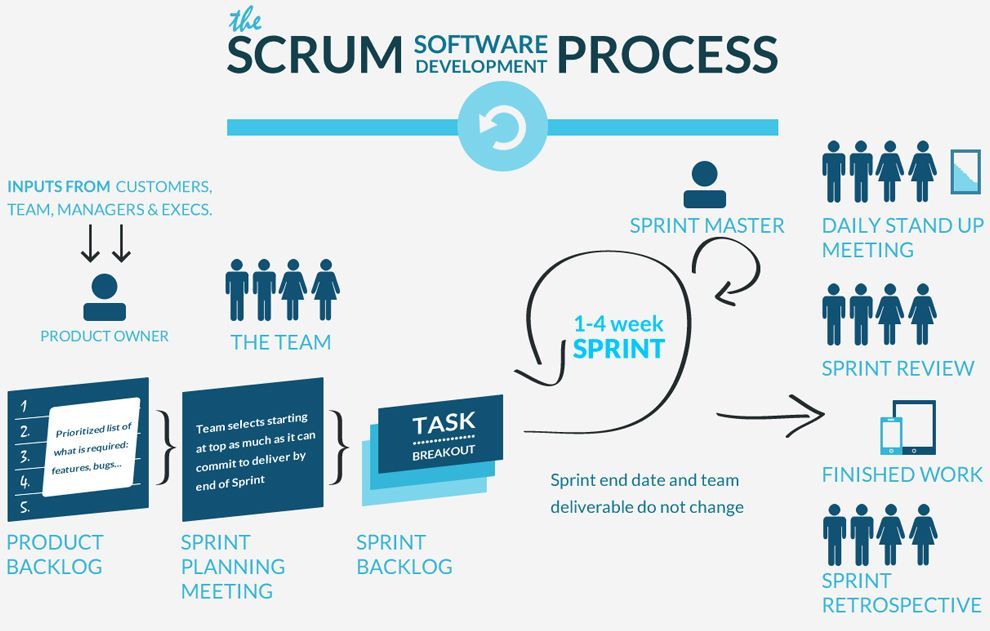The Scrum approach to Agile Software Development marks a dramatic departure from waterfall management.
Scrum is one of the most popular frameworks for implementing Agile. Because of its popularity, many organizations claim to be “using Scrum” but aren’t doing anything close to Scrum’s actual definition.
Scrum emphasizes on empirical feedbacks and self-management team, while striving to build a properly tested product implemented within short iteration.
It was originally created for the software development, which can be used by Project Managers to streamline their development process. But it works well for any complex and innovative scope of work. The possibilities are endless.
Though it’s difficult to cover every aspect of Scrum, in this post we are covering its basic vocabulary and how it’s implemented in our today’s blog.
Without further ado, let’s begin with the Scrum terminology.
Basic Scrum Terminology
Before being able to implement Scrum, it is important to be familiar with some keywords of Scrum vocabulary.
Sprint: a 30-day focused effort moving the team toward fixed goals.
Product Backlog: a prioritized feature list containing short descriptions of all functionalities desired in the product.
Sprint Backlog: a list of the highest prioritized items or tasks from the product backlog.
Scrum Master: the facilitator of the product management team who works to ensure the realization of the goals of the sprint.
Product Owner: member of the team responsible for defining and prioritizing the backlog.
Scrum Team: this includes three roles: the product owner, the Scrum Master and the members of the development team. This is a group of 5-9 people who self-organize and have joint responsibilities for completing the tasks.
The Scrum Process
Now that the basic terminology related to Scrum has been defined, below is the step-by-step Scrum process:
- Creating a backlog.
In this step, the Product Owner and Scrum Team meet in order to discuss the items on the Product Backlog and their priority. The Product Owner must be able to form the product vision. The Product Backlog, then, is a prioritized list of what is required for the project and is ranked with regard to importance or priority. - Once the Product Owner creates the Product Backlog, there will be a Sprint Planning Meeting.
During the first phase of the meeting, the Product Owner describes to the team the goals of the project and explains the Product Backlog. During the second phase, the Scrum Team will select the items to be completed during the sprint from those with highest priority on the Product Backlog. - Once the items to be worked on have been selected, a potential Sprint schedule is constructed – taking into account the availability of the team members to devote their time to the project. The items in the Product Backlog are assigned and broken down into individual tasks. Once this is accomplished, the document created is called the Sprint Backlog.
- The Sprint begins and lasts from 15 to 30 days. During the Sprint, no other tasks are added to the backlog.
- Daily Scrum begins when the sprint begins. The Daily Scrum is a 15 minute stand-up meeting where each member of the team gives a very brief report to everyone else – what they have accomplished since the last Daily Scrum, what they hope to accomplish, and issues that have come up. Here, the Scrum Master will take note of the problems and attempt to resolve them – after the meeting.
- Sprint Review – Once the Sprint ends, everyone gets together in a meeting to share what they have accomplished during the sprint.
- The process begins again with a new list of prioritized tasks on the Product Backlog.
Reference:www.scrumalliance.org
Finally, you can see below a graphic representation of the Scrum Software Development Process:







